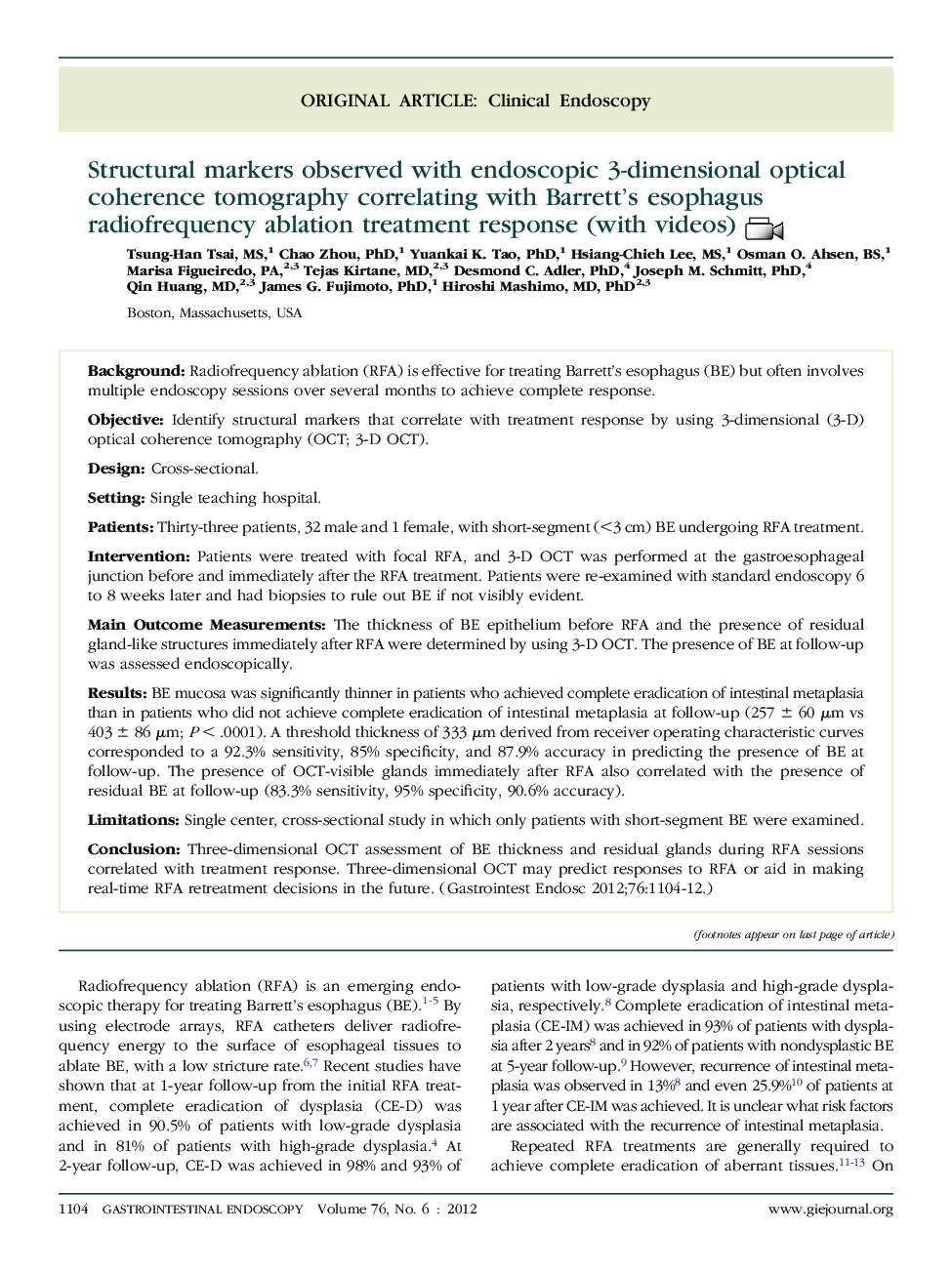| کد مقاله | کد نشریه | سال انتشار | مقاله انگلیسی | نسخه تمام متن |
|---|---|---|---|---|
| 3304768 | 1210341 | 2012 | 9 صفحه PDF | دانلود رایگان |

BackgroundRadiofrequency ablation (RFA) is effective for treating Barrett's esophagus (BE) but often involves multiple endoscopy sessions over several months to achieve complete response.ObjectiveIdentify structural markers that correlate with treatment response by using 3-dimensional (3-D) optical coherence tomography (OCT; 3-D OCT).DesignCross-sectional.SettingSingle teaching hospital.PatientsThirty-three patients, 32 male and 1 female, with short-segment (<3 cm) BE undergoing RFA treatment.InterventionPatients were treated with focal RFA, and 3-D OCT was performed at the gastroesophageal junction before and immediately after the RFA treatment. Patients were re-examined with standard endoscopy 6 to 8 weeks later and had biopsies to rule out BE if not visibly evident.Main Outcome MeasurementsThe thickness of BE epithelium before RFA and the presence of residual gland-like structures immediately after RFA were determined by using 3-D OCT. The presence of BE at follow-up was assessed endoscopically.ResultsBE mucosa was significantly thinner in patients who achieved complete eradication of intestinal metaplasia than in patients who did not achieve complete eradication of intestinal metaplasia at follow-up (257 ± 60 μm vs 403 ± 86 μm; P < .0001). A threshold thickness of 333 μm derived from receiver operating characteristic curves corresponded to a 92.3% sensitivity, 85% specificity, and 87.9% accuracy in predicting the presence of BE at follow-up. The presence of OCT-visible glands immediately after RFA also correlated with the presence of residual BE at follow-up (83.3% sensitivity, 95% specificity, 90.6% accuracy).LimitationsSingle center, cross-sectional study in which only patients with short-segment BE were examined.ConclusionThree-dimensional OCT assessment of BE thickness and residual glands during RFA sessions correlated with treatment response. Three-dimensional OCT may predict responses to RFA or aid in making real-time RFA retreatment decisions in the future.
Journal: Gastrointestinal Endoscopy - Volume 76, Issue 6, December 2012, Pages 1104–1112